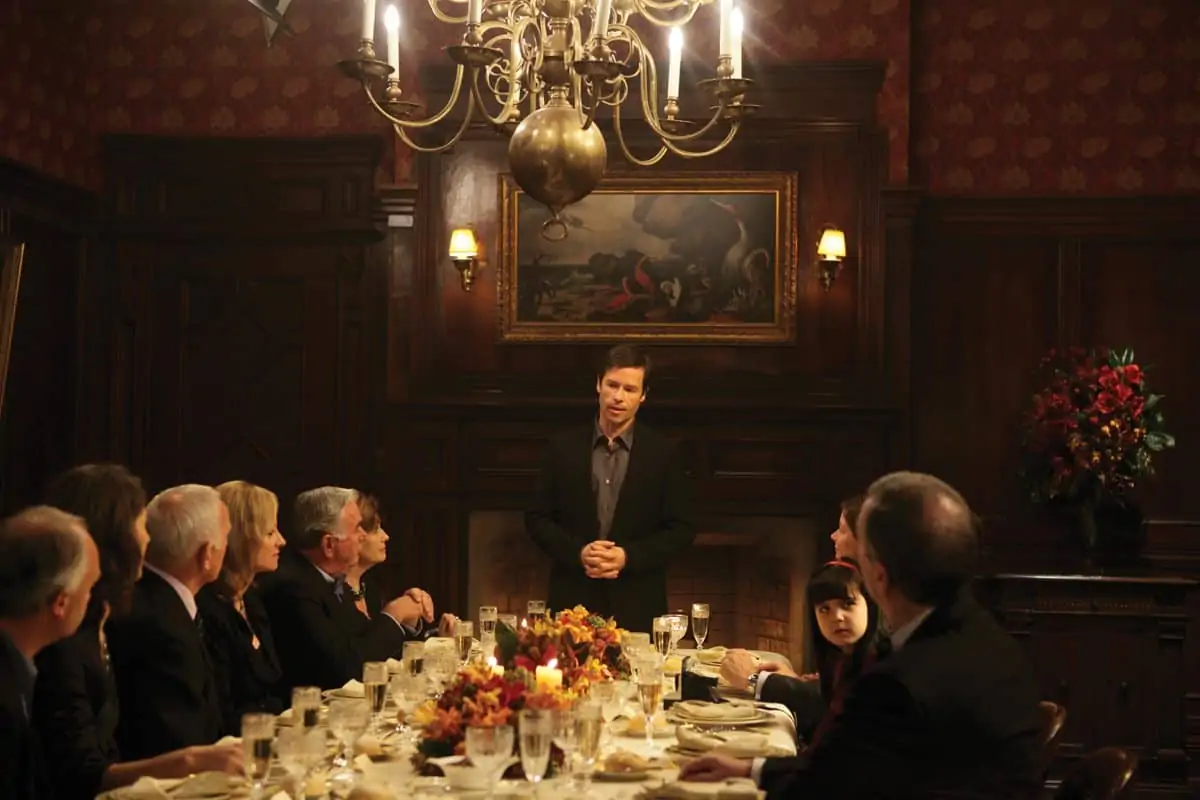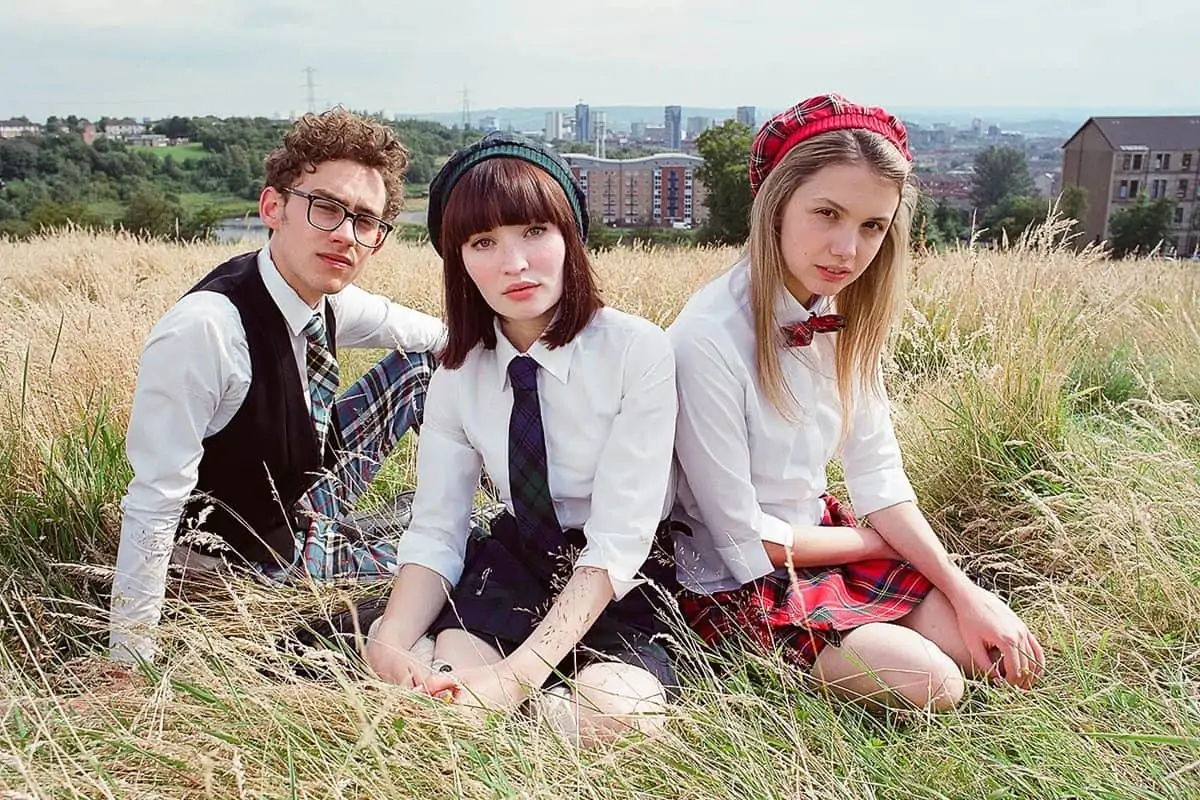Deadly Serious
Oliver Stapleton BSC / Don't Be Afraid of the Dark

Deadly Serious
Oliver Stapleton BSC / Don't Be Afraid of the Dark
The cinematography in Don’t Be Afraid of the Dark, as it title might hint, invites you into a nostalgia of the horror genre. Veteran cinematographer Oliver Stapleton BSC has brough a good, old-fashioned horror film back to life with the help of newcomer director Troy Nixey and the maestro of the macabre, Guillermo Del Toro.
Stapleton knew going into the project that Del Toro’s cadence for the bizarre, and other-worldliness, would challenge him as a cinematographer, and he was up to the task.
“Guillermo does enjoy the dark side of life,” says Stapleton, “but in a very cinematic and playful way. This is like Pan’s Labyrinth-light. It’s as scary in some ways, but whereas Pan’s Labyrinth really got into the dark side of human nature in a very profound, deep and almost mystical way, this film is more straightforward, with creatures and such coming up the drain pipes.”
Stapleton – known for greats such as Cider House Rules and The Proposal, and cult classics like The Grifters – was first approached by producer Mark Johnson for the Narnia franchise years ago. Stapleton had just finished a project and has a policy of not starting one film immediately after ending another, so he turned it down. But, it opened up a connection with Johnson and the two remained close over the years.
However, the fact that a horror film was on his bucket list, that Del Toro was attached, and that after reading the script he was so intrigued, he decided to join the team. “What initially looked like a disaster for me, as a director of photography, turned out to be an amazingly interesting collaboration,” explains Stapleton. “Troy’s personality meshed wonderfully with Guillermo’s very knowledgeable, succinct and generous demeanor; he was never reactive and always soaked in what Guillermo was giving us. I learned a lot from Troy’s background in graphic arts as well.”

When Stapleton initially received the script, he was not keen on the idea. “I prefer to work with my equals, if not my superiors,” he remarks of Nixey. “Otherwise you’re in the wrong role in the wrong place – a sort of film school situation – with brand new directors.”
The film, a remake of the 1973 ABC TV production of the same name, was shot in Melbourne, Australia at Central City Studios. Stapleton remarks that all the major film hubs have great crews today, and Melbourne is no exception. “I’ve been really lucky with my crews,” he says, “because the good ones always seem to be available when I’m around.”
The camera crew on Don’t Be Afraid of the Dark was comprised of Peter McCaffrey as A-camera operator/Steadicam, “The incredibly talented, go-to Australian Steadicam guy,” remarks Stapleton), 1st assistant A-camera Tov Belling, 2nd assistant A-camera Lee Mariano, film loader Ben Bryan, B-camera operator Darrin Keough, 1st assistant B-camera Ricky Schamburg, 2nd assistant B-camera Dora Krolikowska, gaffer Karl Engeler, and key grip David Nichols.
An Arricam and two Moviecams, along with the Cooke S4 lenses, Optimo 17-85mm zoom and 24-290mm zoom lenses, used for the film, all belonged to Stapleton. He began amassing his own collection of gear about thirty years ago, primarily because he became fed up with renting equipment that was often faulty or problematic. “I like the familiarity of knowing exactly what equipment I’m working with.”


In tune with the retro horror look, Don’t Be Afraid of the Dark was shot on Fuji Eterna Vivid 500T 8547 and Fuji Eterna 250D 8563 at a1:85 aspect ratio. Besides the fact that Del Toro and Nixey wanted to stay away from the shakey camera, DSLR-look and were going for the classic horror film visual style, there was also a very simple and technical reason for choosing film.
“If you go into a dark hallway in an old house that has stained glass windows, and you put some atmospheric smoke into the room, then you pound a whole lot of light through the windows, film can pick up those details,” explains Stapleton. “Especially the Fuji high-speed film we used, it’s very good at retaining highlights in very bright parts of the shot. That’s the biggest weakness of digital.”
Stapleton believes digital is a little better in 2011, but back in 2009, when they shot the film, digital wouldn’t have been able to rescue the information that is lost when pushing bright lights through a stained glass window into a dark room. “That information would just fall off the top of the scale,” he explains. “You’d go in and you’d try to crush it, but it wouldn’t be there. It would literally have fallen off the chip. With film, the highlights roll off much slower so you can pull detail back from a 4 or 5-stop overexposed shot.”

"If you go into a dark hallway in an old house that has stained glass windows, and you put some atmospheric smoke into the room, then you pound a whole lot of light through the windows, film can pick up those details, especially the Fuji high-speed film."
- Oliver Stapleton BSC
Dailies were provided by Neil Wood at Digital Pictures in Melbourne, with visual effects supervision done by Julian Dimsey at Iloura. Dave Hollingsworth at Park Road Post in Wellington, New Zealand, with whom Stapleton previously worked on The Waterhorse, was the colourist.
“I don’t mind the digital intermediate (DI),” says Stapleton. “In fact, I love it in some ways because of its versatility. There are very few films where you can skip a DI, probably just in the independent realm. But DI, for me, is a bit like what the iPod has done to sound. Before digital sound came along, if you were prepared to spend a couple thousand pounds and build a Hi-Fi system in your house, you could have a phenomenal quality of sound with a vinyl record. That is very similar to printing film onto film and projecting on film – the quality is very high.”











